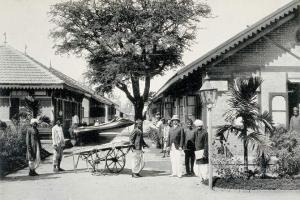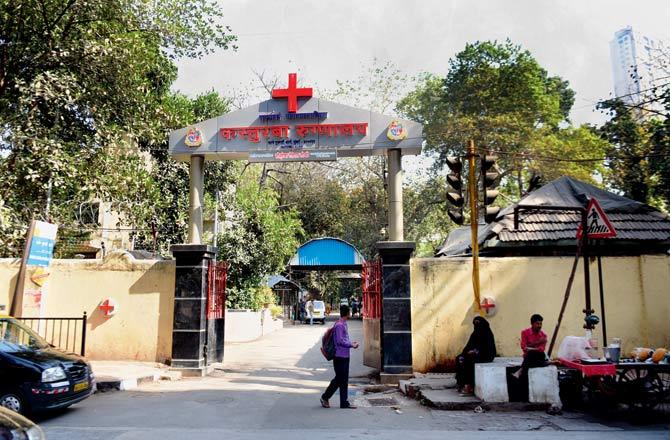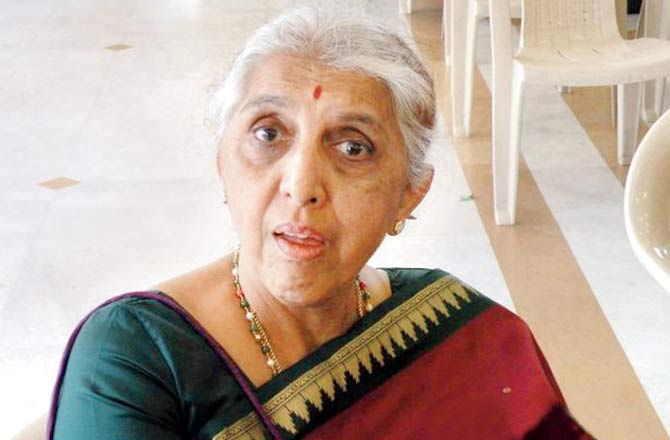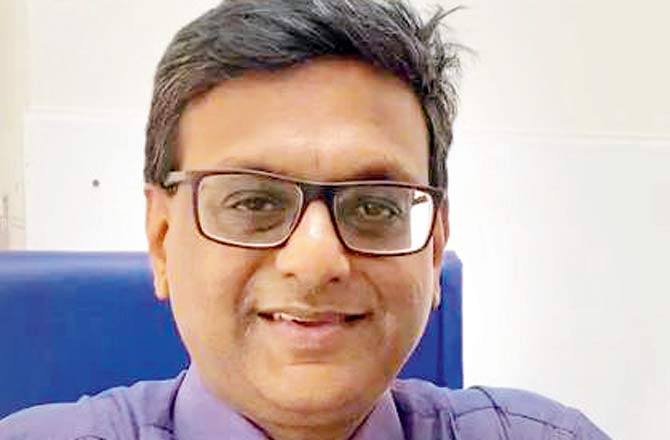Why Kasturba Hospital, built in 1892, remains relevant in the age of super specialty institutions

A photograph by Clifton & Co. shows stretcher carriers and staff outside the buildings of Kasturba Hospital. Pic Courtesy/welcome collection
From smallpox, the bubonic plague, swine flu or the Coronavirus epidemic, Kasturba Hospital at Chinchpokli, has been at the forefront each time the city has faced an infectious disease outbreak. And though around it, swanky new hospitals have emerged, little has changed at this heritage structure—it underwent a restoration in 2014-15—which continues to be the only designated government hospital for infectious diseases.
ADVERTISEMENT
Built as Arthur Road Plague Hospital, historians are not certain when the name changed to Kasturba. Over the years however, what hasn't changed is its role. Manjiri Kamath, an associate professor with the Department of History at the University of Mumbai and a member of the Mumbai Heritage Conservation Committee, says, "There was an outbreak of the bubonic plague in Bombay in 1896. At the time, there was no vaccine and patients of the plague were being treated at the Arthur Road Hospital."

The hospital has been constructed to serve as a space for infectious diseases. It consists isolation wards, a luxury that modern-day hospitals haven’t been able to afford. Pic/Bipin Kokate
She adds, that the plague had major implications for the economy and was a big crisis for the British government. Back then, Kamath says, people were in a state of panic and they wanted to leave the city. Going to the hospital wasn't an option. "Initially, people were reluctant to go to a hospital since it was a new institution for Indians and there were apprehensions about different castes and communities being kept together. There were reports that, for this reason, separate caste-wise and community-wise wards were set up," she adds.
Starting with small pox
Medical historian and former head of the history department at SIES College, Dr Mridula Ramanna, says that Arthur Road Hospital was first created to tackle smallpox patients in 1892. In her book, Western Medicine and Public Health in Colonial Bombay, 1845-1895, she writes that it was constructed as a branch of another hospital for infectious diseases at Grant Road run by the municipal corporation between 1888-1891. "There was a dispute between the municipality and the government over who should bear the expense of maintaining the hospital, which eventually led to its closure. The hospital had to be reopened after the outbreak of small pox in 1892. Since the accommodation proved insufficient, a branch hospital was opened at Arthur Road and, after the epidemic passed, the infectious diseases hospital was permanently shifted to Arthur Road," she says. Before the plague, 1,438 patients were treated at the hospital.

Manjiri Kamath
In her book, Dr Ramanna mentions that the municipal corporation had approved of cholera hospitals in every ward and a permanent smallpox hospital to be built at Arthur Road to accommodate 75 patients. "It was suggested that while the structures could be similar, the smallpox hospital could have a thatched roof covered with matting so that after each use, all articles capable of retaining infection could be destroyed. It, however, later became the only hospital for infectious diseases in the city for treating people suffering from the plague and the first patient was admitted on September 4, 1896."
In her second book titled, Health Care in Bombay Presidency, 1896-1930, Dr Ramanna mentions that the hospital complex comprised open sheds with a stone plinth and earthen flooring. "Each shed had a tiled roof with ridge ventilation supported by iron columns. Each shed had two self-flushing closets, and the compound had surface drains. The Vehar Lake supplied water through pipes to the hospital." Between 1892-1912, Dr Ramanna says more than 29,000 patients were treated at Arthur Road Hospital, primarily suffering from smallpox, plague, cholera, chickenpox and measles.

Dr Mridula Ramanna
An ideal design
According to a paper published by the Journal of the Royal Society of Medicine, Arthur Road Hospital was first led by Nasarwanji Hormusji Choksy who was the first medical superintendent and served at the hospital until 1922.
During the plague, Choksy investigated more than 4,000 cases in detail. In 1897, however, he himself contracted the disease. But was saved due to the use of the Alexander Yersin serum. To recognise his brilliant work, he was even awarded the title Khan Bahadur by the ruling Britishers. Choksy, served as President of the Bombay College of Physicians and Surgeons and he was a member of the Bombay Medical Council from 1912 to 1932. Dr Shivkumar Utture, current president of the now Maharashtra Medical Council Mumbai, says members still laud his work almost 100 years later.

Dr Hemal Shah, nephrologist
Dr Umesh Aigal, former medical superintendent of Kasturba Hospital, who worked at the hospital from 1982 till 2014, says the hospital's design makes it ideal for treatment of infectious diseases. "The hospital has a separate entry and exit to avoid spread of infection. During my tenure, I have seen cases of leprosy, SARS (severe acute respiratory syndrome) and swine flu," he adds.
At present, the hospital compound comprises 30 wards, of which 16 single-storeyed buildings are considered to be heritage structures. Civic officials said that the heritage structures have sloping two-part roofs with Mangalore tiles and large ventilators to keep the rooms cool. The BMC had taken up a restoration project back in 2014-15. Wajid Shaikh, an official with the Hospital Infrastructure Cell of the civic body, says, "The walls are made out of brick and the structure supported by wooden pillars. The large ventilators allow sunlight and flow of air in the wards."
While the civic body doesn't have information about when the other two storeyed RCC (cement) structures came into existence, Dr Aigal estimates them to have been constructed in the early 1960s.
Old hospital, new value
Dr Hemal Shah, nephrologist at Bhatia and Saifee hospitals, says, "As an alumnus of Topiwala National Medical College and Nair Hospitals in Mumbai, I was posted in the nearby Kasturba Hospital. I spent some time at this facility between 1990 and 1991. I remember a one-month posting distinctly. It was the most relaxed one month of our curriculum. The hospital itself was beautiful and spacious. It has multiple single-storied buildings for different diseases. They had wards for measles, chicken pox and mumps."
Dr Shah remembers very "few patients and most of them were asymptomatic and kept for isolation". "As young doctors, we always wondered, what a waste of space. And we discussed amongst ourselves—why is Nair Hospital so crammed and Kasturba so empty and why can't we shift some departments there?" he adds, continuing, "Almost cocky about the recently acquired knowledge of microbiology and pharmacology, we wondered why would patients need isolation when appropriate drugs are available? But later we found out that the original design of the hospital was from the pre-antibiotic era or to correctly put—before all anti-microbial agents were available. The only resort then was to isolate the patients and hope for natural immunity to help them fight that infection. In the 1990s, as an intern, I scoffed at this idea. Till now, most of the world felt invincible."
But with the Coronavirus outbreak, people have realised the significance of the old Kasturba Hospital all over again. "The general public and medical fraternity felt that the science of medicine has reached a certain level of nirvana. We felt we could fix everything. Now in 2020, I realise how vulnerable we are. Now I know why an infectious disease hospital—away from regular patients—is always needed."
Catch up on all the latest Mumbai news, crime news, current affairs, and a complete guide from food to things to do and events across Mumbai. Also download the new mid-day Android and iOS apps to get latest updates.
Mid-Day is now on Telegram. Click here to join our channel (@middayinfomedialtd) and stay updated with the latest news
 Subscribe today by clicking the link and stay updated with the latest news!" Click here!
Subscribe today by clicking the link and stay updated with the latest news!" Click here!






